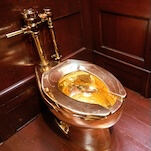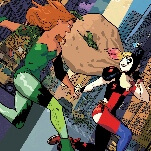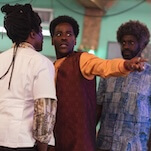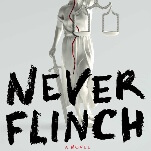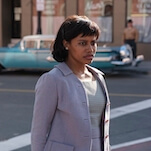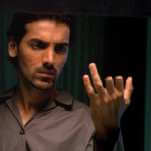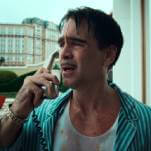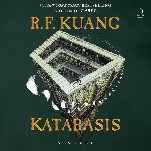The advent of the euro and a surge in immigration across Europe recently prompted a spike in nostalgia for continental life before the fall of communism. But how far back is it safe to go? Oliver Axer and Susanne Benze toy with that question and those who would ask it in Hitler's Hit Parade, a sharply edited compendium of clips from propaganda films, advertisements, cartoons, newsreels, musicals, and home movies from Nazi Germany. For an hour and a quarter, Axer and Benze hit viewers with images of family warmth and showbiz glamour, while daring them not to be distracted by the swastikas in the background.
Dividing the film into sections like "New Life" and "Under The Shelter Of Night," the filmmakers present fragments of German daily life—some exaggerated and idealized, some bracingly real. Happy families eat picnics and see zeppelins float by, and people gather in public places to watch television. Pretty women try on pantyhose, entertainers sing and dance, and leaders display scale models of the utopian world to come. Unlike modern terrorist states, or Soviet Russia, Germany under the Nazis enjoyed a culture that wasn't too dissimilar from the rest of Western Europe, which meant their entertainment wasn't that different from that of contemporaneous Hollywood. If anything, German theatricality may have been more sophisticated, given the influence of Berlin artists on the varying strains of modernism that developed between the wars. Just as a collection of rarely seen, high-quality movie footage, Hitler's Hit Parade works smashingly well—that is, until the bright animation and glossy melodramas become dotted with racist depictions of Jews. (Which begins with a section ironically titled "Millions Travel German Rail.")
The Holocaust passages are necessary, as are the gory battleground scenes, but intentionally or not, the film's sunnier footage stands out instead. Like the Jim Crow South or South Africa under apartheid, pre-war Germany derived a degree of luxury from the horrible injustices it perpetrated, and citizens didn't hesitate to enjoy themselves. To Axer and Benze's credit, they don't invest their kaleidoscope of images with any specific shame, rightly figuring that Gestapo uniforms and casual "sieg heil"-ing serve as significant enough balance to smiling Aryan children on nature hikes. But at times, matter-of-factly, Hitler's Hit Parade carries an ache for memories that a whole generation has been required to disown.











